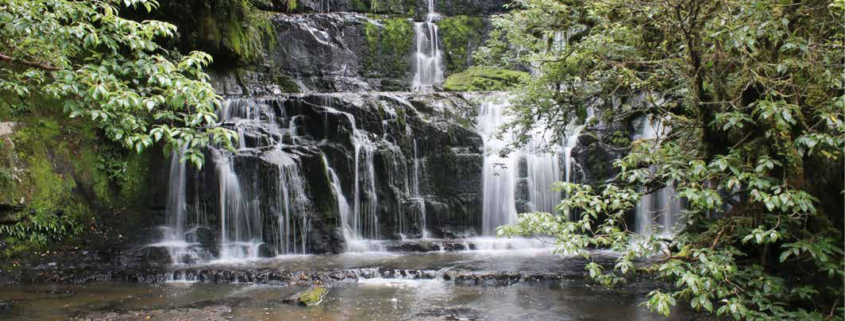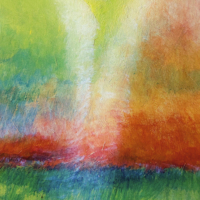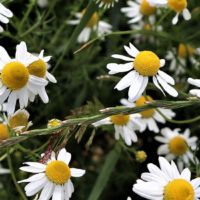Traditional Māori Agriculture and Biodynamics
Harvest Article – Summer 2020
The following piece is an excerpt from The Autumn/Winter issue of Harvests 2021. For access to the preparations, twice yearly Harvests Magazine and to participate in monthly Zoom gatherings, become a member of Biodynamics New Zealand.
By Tyne-Marie Nelson
In 2015, Tyne-Marie Nelson undertook a research project to identify resonances between biodynamic farming and traditional Māori methods of agriculture. The project was supported by Taruna College and funded by Te Kete Ora Trust. Sections of that work are reprinted by permission here.
In the foreword to her full research paper, Tyne explains her motivations for the project:
During my time studying the Certificate of Applied Organic and Biodynamic Agriculture at Taruna, I was simultaneously reconnecting back to my whenua (after being away from home for some time) and becoming familiar with my whakapapa. Knowing who you are, and where you come from, is of utmost importance in Māori culture, and it brings its own reward – a strong sense of identity and belonging.
I recall a group conversation with Rachel Pomeroy who, along with her partner Peter Proctor (both respected stalwarts of the biodynamic method), spent much time in India, teaching and supporting farmers with their biodynamic practice. Biodynamics was readily embraced in India, and Rachel explained that the practice of it had also helped reinvigorate some of the Indians’ traditional ways of cultivating food, those that had fallen to the wayside upon the introduction of chemical farming in India. I found myself wondering why there weren’t more Māori practicing biodynamics.
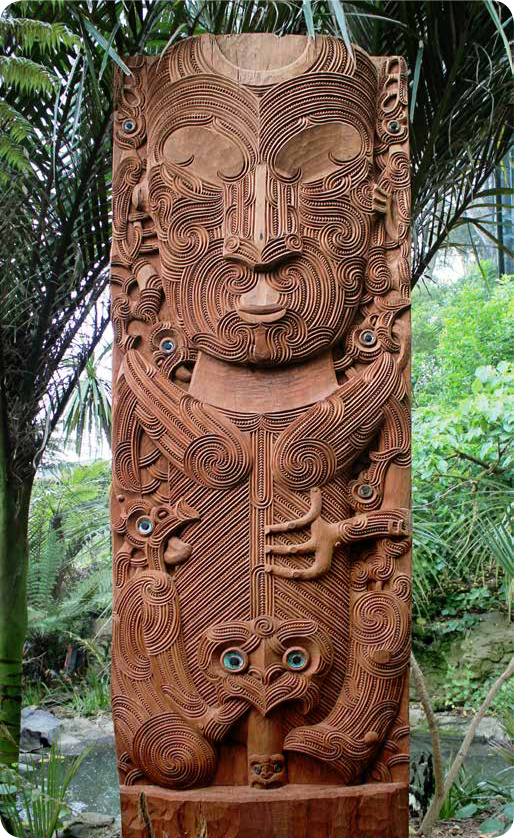
Sure, in India, there is already a deep appreciation for the sacred cow, which doesn’t feature in te ao Māori (it not being a part of our traditions). However, Māori culture has its roots in te taha wairua, the spiritual plane of existence, and recognises a kinship between all things of te ao tūroa, the natural world. Therefore, as a result of my own cultural foundation, understanding the dynamic side of biodynamics came naturally and without protest.
In sharing my learnings about biodynamics with whanau and friends, I found that what had initially sounded ‘weird’ and ‘far out’ became somewhat more palatable when I used Māori terms to explain the concepts behind them. The use of the word ‘mauri’ when talking about the ‘forces’ was particularly helpful and inspired some ‘ahhhhhhhhhhhh!’ moments.
This is where the impulse to do this project came from. It is an exploration of the threads of connection between Māori agriculture and biodynamics, to assist the proponents of each to find, meet and learn from each other – if they so desire.
I have identified five main tenets of Māori culture and anthroposophical/biodynamic philosophies that are synergistic and which I think are a good basis for meeting each other.
- The living soil
- Mauri
- Everything is connected: The Māori holistic worldview
- Water
- Earth is but a reflection of the cosmos
The living soil
In his book Grasp the Nettle, Peter Proctor writes:
One of the underlying principles of biodynamic farming is the developing of life-giving humus out of dead organic material. This biologically active humus is the basis of all living soil.1
Peter Proctor
The connection between Māori and the soil stretches back to the time of creation; one of the primal parents, Papatūānuku, is the earth. The first soil was taken by her at Kurawaka, by Tāne, and with it he formed Hineahuone, the first human being, who was fashioned out of soil. Each of the atua gave to her part of their mauri (life force), and Tāne (the Fertiliser) breathed life into her: ‘Tihei mauri ora!’ (the sneeze of life). Thus, she was made of the meeting of both the terrestrial and celestial, as are we and all that are borne from her. Hineahuone, the first woman, has the whare tangata (womb), the ability to procreate.
Sacred earth, both sand and soil, was often used as a mauri (talisman). Ruawharo, a tohunga of the Tākitimu canoe, stopped at Māhia and deposited a parcel of sand from Hawaiki as a mauri for whales. Soil from the ancient Polynesian altar of Rangiātea was brought to New Zealand on the Mataatua canoe and placed at a garden known as Matirerau in Whakatāne.
The Tainui canoe also brought sacred soil from Rangiātea. It was brought ashore by Hoturoa and used to construct an altar at Kāwhia. Tainui ancestor Tūrongo took some of the soil to Rangitoto in the Waikato where he set up an altar. When Ngāti Raukawa migrated to Ōtaki they buried soil as a mauri under the altar of their new church, which was also called Rangiātea.2
The term for placenta is whenua; and it is customary to return the whenua (placenta) back to the whenua (land) through burying it in the soil.
The traditional thinking behind soil, for Māori, was that you are preparing where you came from, and where you are going – it is not just soil. So, if that is where you come from, and where you are going – it is not just soil.3
Embedded in the creation story of te ao Māori – the Māori world – is the recognition of soil as the basis for life. Biodynamics improves the soil and enhances its vital forces, its mauri. This respect and reverence for soil is strong within both cultures.
Mauri
Mau – to hold tight; ri – to shield
Mauri is an important aspect of Māori culture. It is the gift of life, an intangible life force that dwells within all things. People have a mauri; natural resources have a mauri; even inanimate objects are said to have a mauri.
Mauri could be likened to Steiner’s etheric forces: “Now whether it be man or any other living being, the living being must always be permeated by an ethereal – for the ethereal is the true bearer of life, as we have often emphasised.” 4
This understanding of mauri by Māori makes for easy comprehension of the ‘forces’ referred to in biodynamics.
Everything is connected: The Māori holistic worldview
In te ao Māori, the Māori worldview, everything is connected. When we whakapapa, we are recognising those connections and finding our place in the world. That is why, when you recite your pepeha upon meeting people, you recall not only your human relatives and ancestors and where you live now but also where you came from – your ancestral land, rivers, lakes and mountains. It is important to remember that in te ao Māori all things are connected, and whakapapa is one of the methods used to illustrate this point. This is also illustrated by the whakatauki ‘ki uta ki tai’ – ‘from the origins to the sea’. This is an allusion to an awa or river that meanders through the landscape, eventually discharging into the sea. This metaphorical statement recognises two key facts: that water is the giver of life, which exists across all landscapes and is imperative to our future wellbeing or survival, and that everything is connected.
The creation story sets the scene for us, and explains these fundamental beliefs:
- The focus of the traditional Māori understanding of the environment is on that interconnection; it is expressed in whakapapa, which begins with Tāne Nui a Rangi and Papatūānuku, to Tānemahuta and their many other children, and through them to all living creatures. Certainly there is conflict in that world; Tawhirimatea lashing the children of Tāne with the force of his wind, and Ruamoko shaking the earth, but it is all within the family, and it is a matter of maintaining a state of balance so that the connections that bind creation are strong and sustaining. 5
Tangata whenua means ‘people of the land’. Dr Ranginui Walker explains the basis of this expression:
- Papatūānuku was loved as a mother is loved, because the bounty that sprang from her breast nurtured and sustained her children. Humans were conceived as belonging to the land. They were not above nature but an integral part of it.6
Rudolf Steiner said: “…as human beings we cannot truly say that we are separate. We cannot sever ourselves. We are united with our surroundings – we belong to our environment. As my little finger belongs to me, so do the things around us naturally belong to the whole human being.”7
Hence, we have established yet another point of connection between Rudolf Steiner and Māori worldviews.
This interconnectedness is at the heart of Māori tikanga and ways of being in the world. It gives us a strong sense of identity and helps us to know our place in the world. Robert McGowan explains:
- Human kind are descended from Tāne; in terms of the whakapapa we are in fact the teina, even more, the potiki, the most junior of his descendents. One of the key rules of the Māori world is to always respect one’s seniors; not to do so brings about disharmony and even conflict.8
Water
Ko te wai te oranga ngā mea katoa Water is the life giver of all things
The idea that water itself is alive (unless it has been harmed through pollution or other mistreatment) is shared by indigenous peoples throughout the world. To Māori, the inherent life-giving principle within water is its mauri, and each river or body of water has a mauri of its own right.
The Māori word for water is wai. The word for spirit is wairua (wai-rua), meaning ‘two waters that flow together’. This is derived from the understanding that there are two sides to existence – that which is seen, and that of the unseen world.

The treatment of the water, when stirring it with the preparations, enhances the mauri of the water; and when applied to the land, it enhances the earth.
Tyne-Marie Nelson
Māori recognise that not all water is the same and classify it based on spiritual or geological features such as waiora, the purest form of water; waimāori, freely running water; waikino, polluted or spoiled water; and waimate, water which has lost its mauri or life force. Each has its own use to befit its nature.
Māori whakapapa, or connect back through their lineage, to water. Maintaining the health and quality of this resource is of utmost importance in Māori society, and is an issue of these times.
During the Wai 262 flora and fauna intellectual property claim, it was said that “farming practices still to this day have a disregard for the mauri of wai”.9 Steiner recognised that “water contains far, far more than what emerges from it chemically, in this process, as oxygen and hydrogen…”10
I believe this understanding that Steiner had about water is the basis of the technique for stirring the preparations 500 and 501, the chaos being created by the changing of direction throughout the process; and for the creation of the Virbela flowforms used in biodynamics, creating the same ‘chaos’.
It is also my belief that the treatment of the water, when stirring it with the preparations, enhances the mauri of the water; and when applied to the land, it enhances the earth. The use of the flowform to process effluent from dairy farms is a practice that could be very much appreciated by Māori; the Māori way of thinking is that what comes from the land should be returned, in effect, back to the land. It should be noted that the concept of tapu dictates that this should be done in a correct way, as in Māori tikanga the two ends of the alimentary canal are always kept very much apart. This is mirrored by Steiner’s statements relating to humanure.
Earth is but a reflection of the cosmos
The natural world forms a cosmic family, in the traditional Māori worldview. The weather, birds, fish and trees, sun and moon are related to each other, and to the people of the land.
Of Māori, the ethnographer Elsdon Best said: “Undoubtedly the Māori looked upon stars as fecundators, while terra mater was the passive agent.”
This means that Māori understood and acknowledged the influence the cosmos had on the Earth. This understanding influenced their way of life, including their gardening practice.
The natural world forms a cosmic family, in the traditional Māori worldview. The weather, birds, fish and trees, sun and moon are related to each other, and to the people of the land.
Tyne-Marie Nelson
This is a key point of biodynamics: the influence that the cosmic family (the stars, moon, planets and sun) have on the land and all things borne from it.
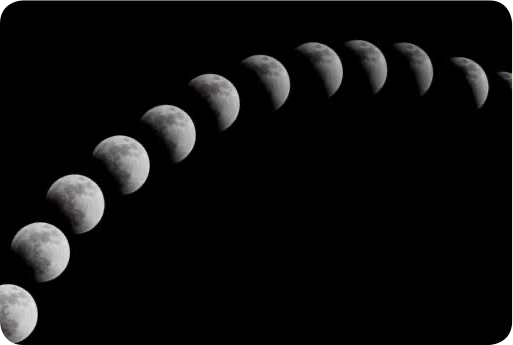
“Earth is but a reflection of what is taking place in the cosmos. For man this fact is only masked because he has emancipated himself; he only bears the inner rhythms in himself. To the plant world, however, it applies in the highest degree.”
– Rudolf Steiner, The Agriculture Course The Māori planting calendar: Maramataka
The maramataka is the Māori lunar calendar, the word ‘marama’ denoting both the moon and lunar month. Traditionally, the most important function of the Māori lunar planting calendar was to regulate planting and harvesting, fishing and hunting. However, it also informed and regulated the social order, with the calendar of events being well known before any activity would take place. The maramataka demonstrates how intimately the olden day Māori knew their whenua.
The foundation of methodology was rigorous natural observation. Māori relied on the cosmic rising of stars to determine the seasons, phases of industry and periods of time. The community’s tasks revolved around these determinants in combination with other tohu (indicators) such as the flowering of different plants or the cries of certain birds in their particular locality.
To illustrate the keen observation skills of these early Māori, Elsdon Best wrote:
- There is one advantage that the Māori held in his naked- eye studies of the stars, and that was in the possession of extremely keen eyesight. This power of the natives has astonished the present writer when sojourning among them. Colenso tells us that they could see Jupiter’s satellites, and not only seven stars of the Pleiades, but also several others.11
It is generally accepted that the rising of the constellation Matariki (also known as the Pleiades or Seven Sisters) at dawn heralded the New Year, although various tribes celebrated Matariki at different times – some when Matariki was first seen in the dawn sky, some after the full moon rose and some at the beginning of the next full moon. Some regions such as Taranaki used the star Puanga as a signal of the new year, rather than Matariki.
The reappearance of the Pleiades or of Rigel as a morning star can scarcely be said to be the commencement of the
Māori year; it was the tohu or sign of it. The year really began with the first new moon after such reappearance, hence the beginning of the year was not a fixed time, but varied considerably.12
The year was then divided the year into seasons, months and nights.
Seasons
The season names are: kōanga (spring), raumati (summer), ngahuru (autumn), and hōtoke or makariri for winter. However it is important to note that these were by no means fixed dates; nor were the months of the year or the nights of the month fixed. Hohepa Kereopa said:
You have to keep in mind that the seasons change. So planting by the moon was traditionally a guideline, because the old people knew that the seasons shifted, so sometimes you might get an early summer, and sometimes you might even get frosts even into September and October, so you have to take all these things into account, and not just rely on one thing.13
Months
The maramataka divided the traditional Māori year into 12 lunar months. A lunar month is usually 29 and a half days between successive new moons, and normally straddles two calendar months. Māori needed a system that matched lunar months with the solar year – a lunar year is around 11 days shorter. Some tribes listed 13 months in their lunar year, indicating that one month was occasionally added to account for the extra period of time. Those tribes which had only 12 months would have used a different system to account for the extra time. The year started in June, Pipiri, and each month was represented by a star, which was thought to be the Ariki or ‘Chief’.
Nights
Rather than referring to the days of the week, Māori spoke of nights of the month, each night having its own name. Because the divisions of the lunar month are dependent on viewing the moon at night, the old people called these divisions ‘the nights of the month’. In reality, one division includes a night and a day: 24 hours. The next division begins on the next night.
Some nights were considered unlucky for planting and fishing, while others were deemed favourable. There are a number of tribal variations relating to the nights of the moon. Elsdon Best in his Nights of the moon listed eight in their entirety, making note of many others. Generally, Whiro was the first night of the new moon, Mutuwhenua was the last and in the majority of cases Rakaunui was the full moon. Elsdon Best assumed that the variations between tribes pertaining to the nights of the moon was largely due to forgetfulness:
- Names of nights of the moon differ to some extent in different districts, as also does the order in which the names occur. Quite possibly the latter peculiarity is due to forgetfulness on the part of the contributors’ data, for it is long since the Māori system of time division was abandoned.14
This may well have been the case in some instances. However, it seems not to be the full picture, as Wiremu Tawhai explains in the introduction to his book, Living by the Moon:
- The extensive work of ethnographers like [Elsdon] Best, Grey, Cowan and Tregear and others who wrote down what they observed and what people told them is acknowledged with respect. Much more knowledge would have been lost if they had not done so. However, it is likely that they often guided the information they received by asking specific or leading questions, to which informants sometimes gave half answers, or were devious in sharing their deep sacred knowledge…. Despite the effort by ethnographers, not all the knowledge, the information, and the practical application of it as held in the traditional tribal histories has been captured in print. And still much more remains in the domain of oral testimony and historical recitals.15
It seems that Elsdon Best didn’t take into account both the oratory nature of the culture and how prized this information was to Māori. It’s likely that at the time that he was collecting this data, he would have found it incomprehensible to think that some Māori may not want their taonga, their knowledge of these things, written down. In te ao Māori, knowledge is power and when you pass on tapu information, you thereby shed part of your mauri; hence elders were very careful in the sharing of their ancestral knowledge.
Because of the high oral content of this knowledge base, it is immediately evident that a heavy reliance is placed on remembering. Our grandparents and parents developed this faculty to a very high degree, using ancient mythology, stories, personalities from history, old songs, proverbs and practical demonstrations – all to encourage and foster the retention of the experience.
The use of the maramataka declined when large populations of Māori found themselves landless as a result of colonisation and were forced to move to townships and look for employment. To an urbanised people, this information became less and less relevant.
However, there was renewed interest in the maramataka following the year 2000, and it was again used by some Māori for planting and fishing. Interest has continued to grow to this day.
[Editor’s note: This essay was first written in 2015; the author notes that there has been an ongoing ‘massive revitalisation’ of maramataka in the years since.]
Tyne Nelson (Ngāti Kahungunu, Ngāti Hine, Pakeha) has always had an inclination towards hauora and has been committed to growing her rongoā knowledge for several years over which she has been mentored by Pa (Rob McGowan).
She was raised in Waipukurau and is currently based back in Hawke’s Bay. Tyne has a background in hospitality and cooking, and has studied biodynamic agriculture at Taruna College. She is a new mama to two beautiful babies and supports various local projects which aim to restore the environment.
References
1. Peter Proctor, Grasp the Nettle: Making Biodynamic Farming and Gardening Work (Penguin Random House New Zealand, 1997), 10.
2. Basil Keane, “Oneone – soils – Soil in Māori tradition”, in Te Ara – the Encyclopedia of New Zealand, updated 22 Sept 2012, www.teara.govt. nz/en/oneone-soils/2
3. Paul Moon, A Tohunga’s Natural World: Plants, Gardening and Food (David Ling Publishing, 2005), 54.
4. Rudolf Steiner, Lecture 3 in The Agriculture Course (1924), https:// wn.rsarchive.org/Lectures.
5. Rob McGowan, “Growing the connection between Rongoā Māori, traditional Māori medicine and New Zealand herbal medicine”, paper presented to New Zealand Association of Medical Herbalists AGM Conference (2010), http://oranewzealand.com/shop/rongoa-maori- 1/2-4-2-growing-the-connection-between-rongoa-maori-traditional- maori-medicine-and-new-zealand-herbal-medicine.html
6. Dr Ranginui Walker, WAI 262: The flora and fauna intellectual property claim, NKII Executive Summary (2015).
7. Rudolf Steiner, Lecture 3 in The Agriculture Course.
8. Rob McGowan, “Growing the connection between Rongoā Māori, traditional Māori medicine and New Zealand herbal medicine”.
9. Peter Flynn, WAI 262: The flora and fauna intellectual property claim, NKII Executive Summary (2015).
10 Rudolf Steiner, Lecture 1 in The Agriculture Course.
11. Elsdon Best, “Heliacal Rising of Stars” in The astronomical knowledge of the Māori, genuine and empirical, Dominion Museum Monograph No. 3 (1922), 38.
12. Paul Meredith, “Matariki – Māori New Year” in Te Taiao: Māori and the Natural World (New Zealand Ministry for Culture and Heritage, 2010).
13. Paul Moon, A Tohunga’s Natural World, 69.
14 Elsdon Best, “Māori and the division of time” in Nights of the moon, Dominion Museum Monograph No. 4 (1959), 29.
15 Wiremu Tawhai, Living by the Moon: Te Maramataka a Te Whānau-ā- Apanui, (Huia Publishers, 2013), 1-2.

